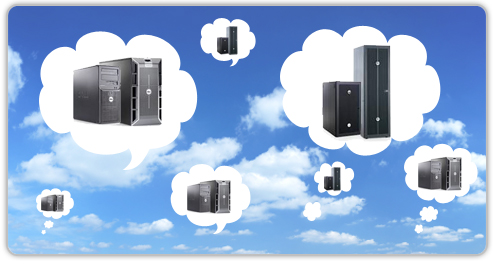
Cloud computing is all the rage. quotIt39s become the phrase du jour,quot says Gartner senior analyst Ben Pring, echoing many of his peers. The problem is that as with Web 2.0 everyone seems to have a different definition. As a metaphor for the Internet, quotthe cloudquot is a familiar clicheacute, but when combined with quotcomputing,quot the meaning gets bigger and fuzzier. Some analysts and vendors define cloud computing narrowly as an updated version of utility computing basically virtual servers available over the Internet. Others go very broad, arguing anything you consume outside the firewall is quotin the cloud,quot including conventional outsourcing. Cloud computing comes into focus only when you think about what IT always needs a way to increase capacity or add capabilities on the fly without investing in new infrastructure, training new personnel, or licensing new software. Cloud computing encompasses any subscription-based or pay-per-use service that, in real time over the Internet, extends IT39s existing capabilities. Cloud computing is at an early stage, with a motley crew of providers large and small delivering a slew of cloud-based services, from full-blown applications to storage services to spam filtering. Yes, utility-style infrastructure providers are part of the mix, but so are SaaS software as a service providers such as Salesforce.com. Today, for the most part, IT must plug into cloud-based services individually, but cloud computing aggregators and integrators are already emerging. We talked to dozens of vendors, analysts, and IT customers to tease out the various components of cloud computing. Based on those discussions, here39s a rough breakdown of what cloud computing is all about 1. SaaS This type of cloud computing delivers a single application through the browser to thousands of customers using a multitenant architecture. On the customer side, it means no upfront investment in servers or software licensing on the provider side, with just one app to maintain, costs are low compared to conventional hosting. Salesforce.com is by far the best-known example among enterprise applications, but SaaS is also common for HR apps and has even worked its way up the food chain to ERP, with players such as Workday. And who could have predicted the sudden rise of SaaS desktopquot applications, such as Google Apps and Zoho Office 2. Utility computing The idea is not new, but this form of cloud computing is getting new life from Amazon.com, Sun, IBM, and others who now offer storage and virtual servers that IT can access on demand. Early enterprise adopters mainly use utility computing for supplemental, non-mission-critical needs, but one day, they may replace parts of the datacenter. Other providers offer solutions that help IT create virtual datacenters from commodity servers, such as 3Tera39s AppLogic and Cohesive Flexible Technologies39 Elastic Server on Demand. Liquid Computing39s LiquidQ offers similar capabilities, enabling IT to stitch together memory, I/O, storage, and computational capacity as a virtualized resource pool available over the network. Next gt Read more http//www.itworldcanada.com/news/what-cloud-computing-really-means/139674ixzz28dMRdrwd or visit http//www.itworldcanada.com for more Canadian IT News
-
- Social Share
for this Blog
- Social Share
-
Comment
Porfolio And Blogs
Diwakar Chaudhary follows various companies, these companies and employers can view Diwakar's resume.
Diwakar-Chaudhary's Blogs/Portfolios






